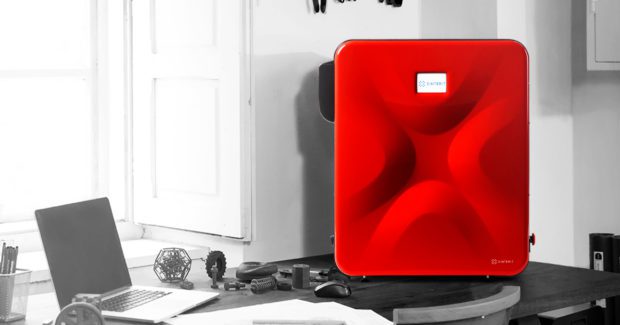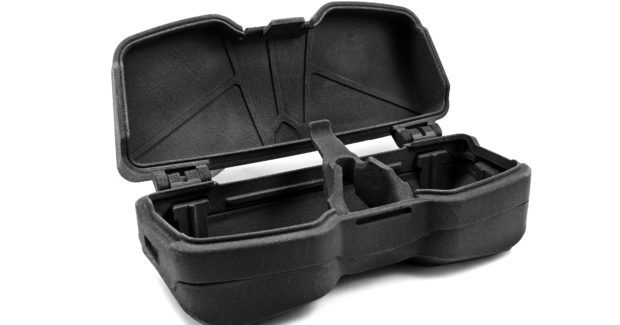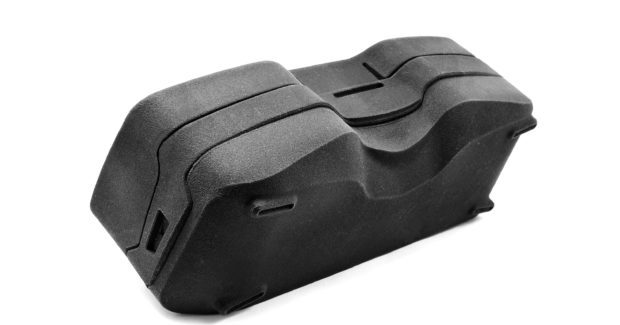Bigger Prints with Selective Laser Sintering
The next-generation Lisa 3D printer from Sinterit uses PA11 Onyx material to build functional final moving parts, enclosures, latch systems, handles, sporting goods, hinges and fall-proof elements with improved flexibility and outstanding thermal, chemical and impact resistance.
Posted: July 9, 2019
Selective laser sintering (SLS) is addressing more and more problems in prototyping, medical applications, production and design. To meet these needs, the next-generation Lisa 3D printer from Sinterit sp. z o.o. (Kraków, Poland) uses SLS technology to create bigger prints. The increased printing size on its Y-axis raises the overall diagonal dimension of the printing area from 227 mm to 245 mm. The physical size of the printing bed is unchanged, but the printing area is better heated, making it possible to print larger objects. This desktop machine also has improved hardware and easier maintenance. New hardware improves temperature management and boosts the reliability of prints, with tighter gaskets and tighter protective glass to prevent loss of temperature. Access to the lid is easier and laser protective glass replacement is simple to shorten the time needed to start printing and cleaning the machine afterward.
Sinterit also offers a new PA11 powder that is ready to use in desktop SLS 3D printers: PA11 Onyx is a high performance polyamide-11 lightweight bioplastic produced from plant-based renewable resources. Compared to other polyamides from this group, such as PA12, this material delivers outstanding thermal and chemical resistance, accompanied by impact resistance and enhanced flexibility simply on the desktop. PA11 Onyx has high elongation at break and it is highly impact-resistant. With these benefits, engineers and product designers can do a lot more functional tests without damaging the part. It makes a perfect solution for functional final moving parts, enclosures, latch systems, handles, sporting goods, hinges, and fall-proof elements. “Traditionally, PA11 has not been widely used due to its challenges with repeat accuracy on older laser sintering machines,” said Janne Kyttanen, a pioneering digital sculptor creating multidisciplinary work at the intersection of 3D printing, virtual and augmented reality. “The reason for that is controlling heat on the large powder beds that all of the previous machines had. When this material is brought to desktop size, it changes the game. Small size platforms open up new opportunities, not just in PA11, but also beyond.”
For example, a durable, robust and individually-shaped military glass case printed with the Lisa Pro using PA11 Onyx was printed as one piece, meaning it doesn’t need assembling or different screws, hinges or other parts to be functional. Thanks to PA11 Onyx properties, especially high elongation at break, it can be opened and closed thousands of times and will be useful and long-lasting in any hostile environment. PA11 Onyx is also ideal for creating durable custom casings for electronic devices that can endure in unfriendly conditions, but also require some elasticity and high-temperature resistance.
Sinterit sp. z o.o., ul. Rzemieślnicza 20G 30-363, Kraków, Poland, +48 570 967 854, www.sinterit.com.

















